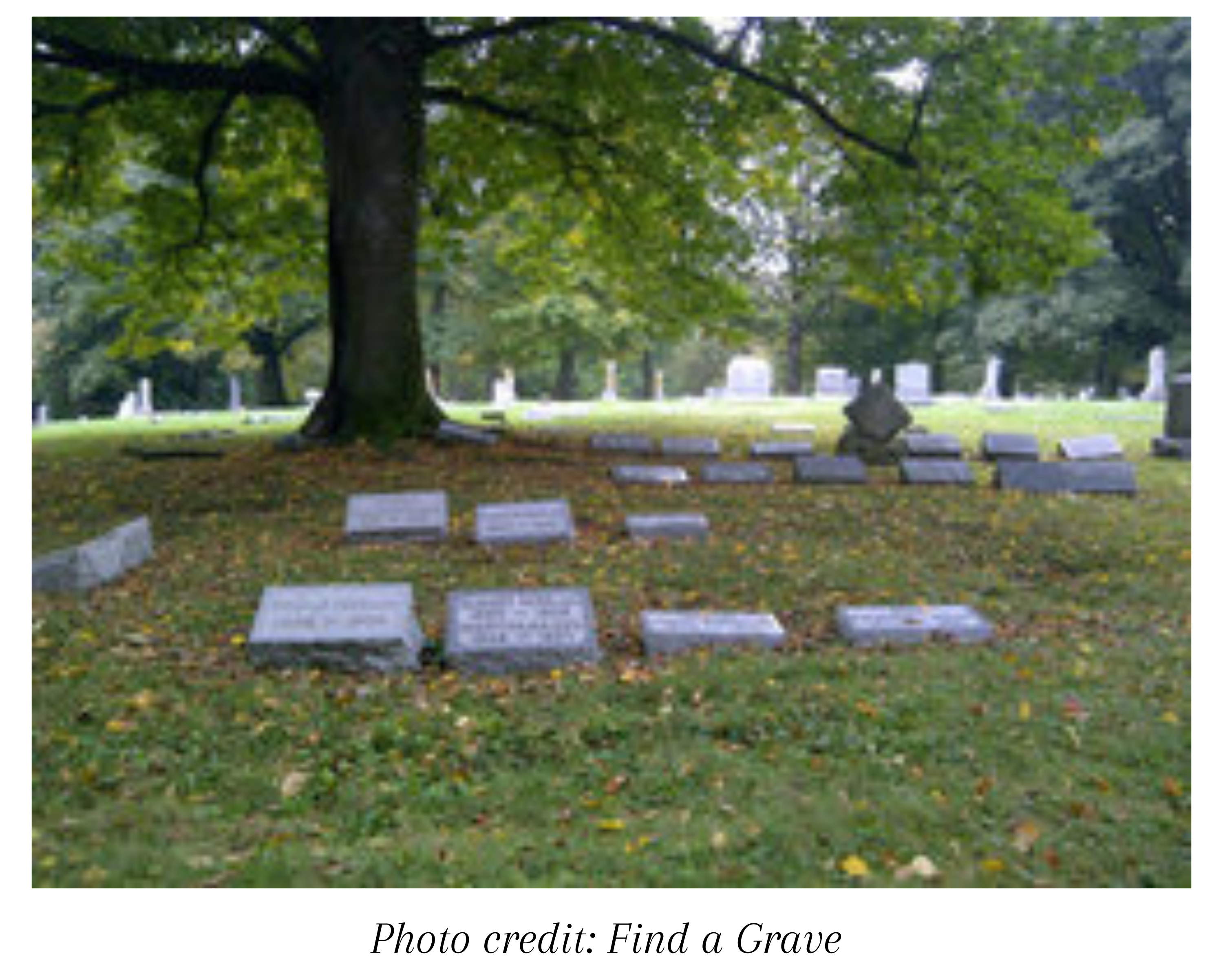Dorothy Morlan and the Lost Murals
Mabel Dorothy Morlan
(5/25/1882–10/25/1967)
 Professional Artist Dorothy Morlan was a member of the Irvington group of Indianapolis artists and stood “among the leading landscape painters of Indiana and could well hold her own among the American women artists who paint landscape subjects.”- Indianapolis Star, 1933.
Professional Artist Dorothy Morlan was a member of the Irvington group of Indianapolis artists and stood “among the leading landscape painters of Indiana and could well hold her own among the American women artists who paint landscape subjects.”- Indianapolis Star, 1933.
Born in Salem, Ohio, in 1882, Miss Morlan moved to Indianapolis with her family at age six and lived most of her adult life in the Irvington neighborhood. Art was always a part of her life, and in 1933 she told the Indianapolis Star, “My father was an artist and painted for pure love of it, so that talent was naturally mine, as well as the ideal of art for art’s sake — and if it hadn’t been for his constant interest and encouragement, very likely I should not have been able to go on. But while it was my father who gave me the most active support, my mother, too, was talented and had a fine sense of color and design.”
In her “first experiments,” Dorothy used their own “beaches and the fields near Irvington” as models. She studied for several seasons near Brookville, Indiana, with J. Otis Adams, and later with William Forsyth (buried in Section 39, Lot 298), both Hoosier Group artists. Her studies continued at John Herron Art Institute and with New York artist Robert Henri, a realist painter, and at the Pennsylvania Academy of Fine Arts. Morlan was a traveler who enjoyed painting a variety of landscapes and seascapes.
Of her inspiration she told the Star, “It is seldom indeed that an actual scene appeals, but very often the mere outline of a tree, or even a branch reaching across the sky or a background of snow, is enough to create an entire composition in my own mind … Always I wanted to express space, air, repose — even in action—depth, silence, solitude, a feeling of largeness, remoteness. Nature talks to me this way.”

Morlan was elected to the Society of Western Artists in 1908. In 1914, she was one of the artists selected to paint murals for the wards of Indianapolis City Hospital. William Forsyth had gathered 16 of Indiana’s “finest and most promising artists” to create what ultimately amounted to a quarter mile of artwork consisting of 33 murals hung so that they would be visible to the patients lying in their beds. Morlan painted two idealized landscapes for the side room and sunroom of the women’s medical ward, which were hailed by the Indianapolis News as the “first great milestone in Indiana art.” Over the decades the murals deteriorated, were damaged, and sometimes lost. Over 20 years ago, members of the Irvington Historical Society visited the soon-to-be demolished Indianapolis City Hospital, then called Wishard Hospital. During the tour, they were given a series of wet, rolled-up canvases which were lying on the floor waiting to be discarded. The canvas rolls were stored until 2019 when restoration was initiated and then resumed in 2023. Thanks to $50,000 in support from the Efroymson Family Fund, the Indiana Historical Society, the Owings Family Foundation, and the Irvington Community Council, restoration was completed by Natalia Nikolayev, an Indianapolis-based Russian fine art conservator.

Morlan continued to paint long after her contributions to the Hospital Project. In 1925, she won a landscape painting award at the first Hoosier Salon exhibition in Chicago. In 1933, her canvases were the second of a “One-Man Exhibition series at Herron.” Her last exhibition was in 1946, again at Herron, and her works can be found in private and public collections in the Indiana State Museum, Newfields, and the Bona Thompson Memorial Center.
See Dorothy Morlan’s Restored Murals
The Irvington Historical Society unveiled the “Lost Murals of Dorothy Morlan” on December 10, 2023, at Irvington’s Bona Thompson Center at 5350 University Avenue in Indianapolis, where they are on display on Saturdays and Sundays through April 2024.
Dorothy Morlan is buried in an unmarked grave in Section 37, Lot 852, with her parents, brothers, and other family members; GPS (39.8225163, -86.1756239).

